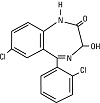Chemicals

Price
Add to Cart
Overview
 The process industries use, manufacture and transport a very wide range of ‘Highly Hazardous Chemicals’ or HHCs. These materials can be explosive, flammable and toxic — or a combination of these three.
The process industries use, manufacture and transport a very wide range of ‘Highly Hazardous Chemicals’ or HHCs. These materials can be explosive, flammable and toxic — or a combination of these three.
The term “highly hazardous chemical” is also defined by the American Society of Mechanical Engineers in ASME B31.3 — 1990 Chemical Plant & Petroleum Piping. They define a “Category M Fluid Service” as that service in which the potential for personnel exposure is judged to be significant and in which a single exposure to a very small quantity of a toxic fluid can produce serious, irreversible harm to persons even when prompt restorative measures are taken.
This ebook describes some of the techniques that are used for classifying chemicals. Then some of the chemicals that are commonly found in process facilities are discussed in more detail.
Table of Contents
Introduction
Regulations and Standards
Safety Data Sheets
Structure
OSHA Requirements
Global Harmonization System
Fluid Categories
Chemical Compatibility
Exposure Limits
Emergency Response Planning Guidelines (ERPGs)
Immediately Dangerous to Life and Health (IDLH)
Permissible Exposure Limits (PEL)
Threshold Limit Values (TLV)
Short Term Exposure Limit (STEL)
Benzene
Carbon Dioxide
Carbon Monoxide
Chlorine
Hydrogen Fluoride
Unloading
KOH Beds
Dedicated Flare
Hydrogen Sulfide
Regulations and Standards
Toxicity
Location of Fixed Monitors
Sensor Technology
Flaring of H2S
Corrosion/Metallurgy
H2S Safety Plan
Basic Guidance
Offshore Facilities
Tank Gauging
Training/Drills
Respiratory Protection
Sensor Locations
H2S Emergencies
First Aid Treatment
Emergency Contact
Lead
Nitrogen
Sulfur Dioxide
Oxygen
Oxidizing Agents

